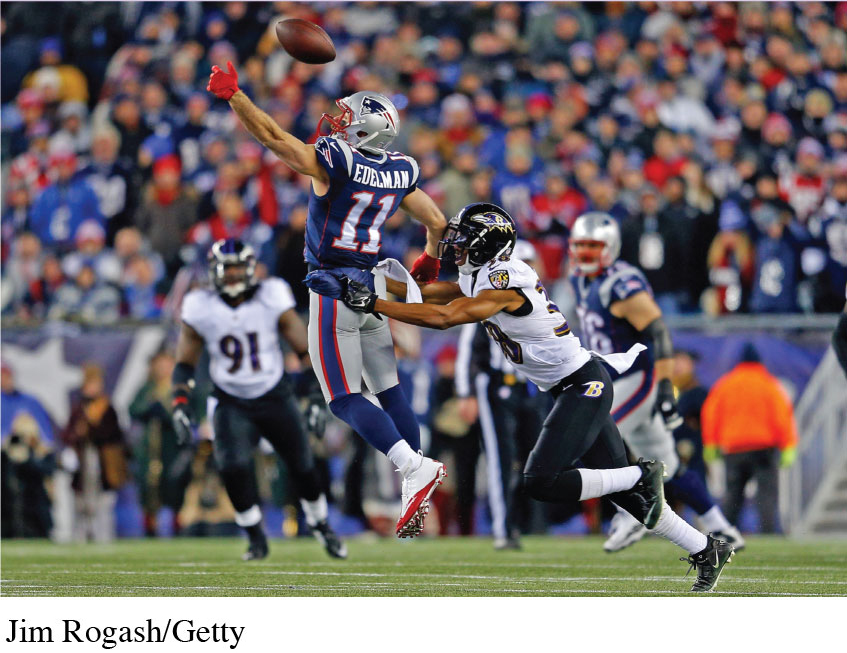MEDIA LITERACY Case Study: Football, Fútbol, and Soccer
MEDIALITERACYCase StudyFootball, Fútbol, and Soccer
26


Since World War II disrupted film production in Europe and gave American filmmakers a chance to solidify their spot at the top of the international entertainment market, the United States has been a leading exporter of cultural mass media products. In addition to (or perhaps because of) U.S. economic and political power following World War II, American-made entertainment and advertising campaigns have been popular or at least widely recognized around the globe. Some see this as positive, citing the influence of American popular culture (and the values it espouses) as inspiring uprisings against oppressive regimes, and crediting American communication platforms such as Facebook and Twitter with the Arab Spring revolts that began in 2011. On the other hand, critics say this globalization of American popular culture disadvantages local and long-established cultures of people around the globe, which may not be as slick or flashy as what comes from Hollywood or Madison Avenue, by distracting the youth of these cultures from traditional values and practices. Often, this discussion involves a smaller, less-developed country worrying about the influence of a larger or more powerful country. From the position of the more powerful country, it might be too easy to dismiss these concerns, at least for some. But what happens when the roles are reversed?

macmillanhighered.com/mediaessentials3e

 Visit LaunchPad to watch a clip from The Simpsons about American reactions to soccer. How have cultures changed since this aired in the late 1990s?
Visit LaunchPad to watch a clip from The Simpsons about American reactions to soccer. How have cultures changed since this aired in the late 1990s?
The 2014 World Cup became the catalyst for just such a role reversal. For most of the world, “football” (fútbol) is the game Americans call soccer; in America, “football” is a very different sport. Outside of the United States, soccer is king, whereas sports like basketball, baseball, and American football dominate in the United States. But soccer and soccer culture have been growing rapidly in the last several decades. The phrase “soccer mom” has been used to describe a segment of the American public since at least the 1990s, and President Obama has been quoted as describing himself as a “soccer dad.” FIFA (Fédération Internationale de Football Association) estimates that there are twenty million young Americans participating in youth soccer programs.1 But this growth in soccer and the popularity of the World Cup competition also draws sharp criticism from social and political conservatives who see it as a kind of threat to American values. Some even go so far as to describe the popularity of soccer as part of a socialist plot, a sign of moral decay, and strike a xenophobic note criticizing the sport as being bad because it is “foreign” and associated with undocumented immigrants.
27
This blurring of physical and political boundaries, the exchange of ideas and cultural products (from films to fútbol?), and the lack of consensus on what it all means and if it should be seen as good or bad is part of what it is to be living in a postmodern world. Trying to determine that meaning and what it says about who is and who isn’t privileged in a global society are key questions for critical cultural scholars who study questions of globalization.
APPLYING THE CRITICAL PROCESS
Investigate the influence of American popular culture on other parts of the world. Look at stories on the home page of at least four international news sources from four different countries. If you are fluent in other languages, good; if you read only English, try the Guardian, the Independent, the Telegraph (all United Kingdom), the Mail & Guardian (South Africa), the Sydney Morning Herald (Australia), the Globe and Mail (Canada), NHK (Japan), the Straits Times (Singapore), AlJazeera.net (Qatar), and the Times of India.
DESCRIPTION Describe the content of the four newspapers, paying particular attention to any U.S.-related content.
ANALYSIS What patterns emerge in the U.S.-related content? Does the content have to do with international politics, sports, entertainment, or some other topic? What percentage of the stories on the home page of each newspaper is about the United States or American culture? Are there any other countries that dominate the news in each newspaper?
INTERPRETATION Does your analysis support the idea that U.S. culture is influential throughout the world? Does the United States have any rivals to the global strength of its culture?
EVALUATION Discuss the advantages and disadvantages of American culture becoming so popular worldwide. Is there evidence that other cultures are influencing American culture? Is that a good or a bad trend?
ENGAGEMENT Continue to read international newspapers, and consider the influence of other countries’ culture on the United States. Contact an editor at your local newspaper and ask why an important story you saw in an international paper isn’t news here.